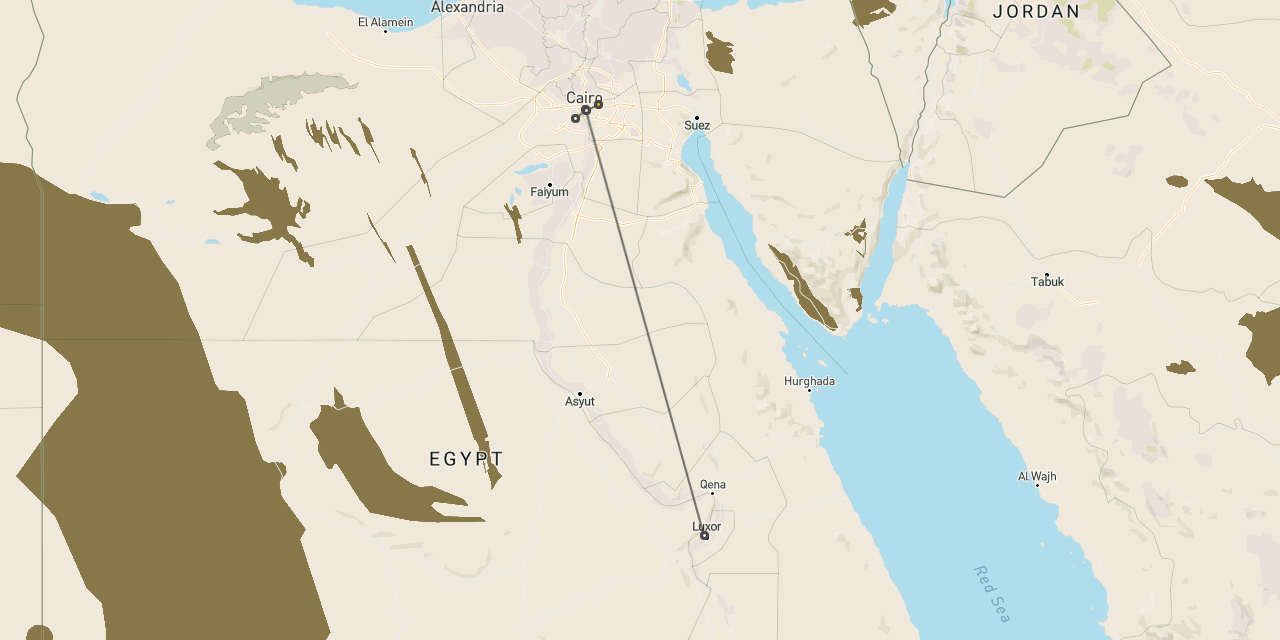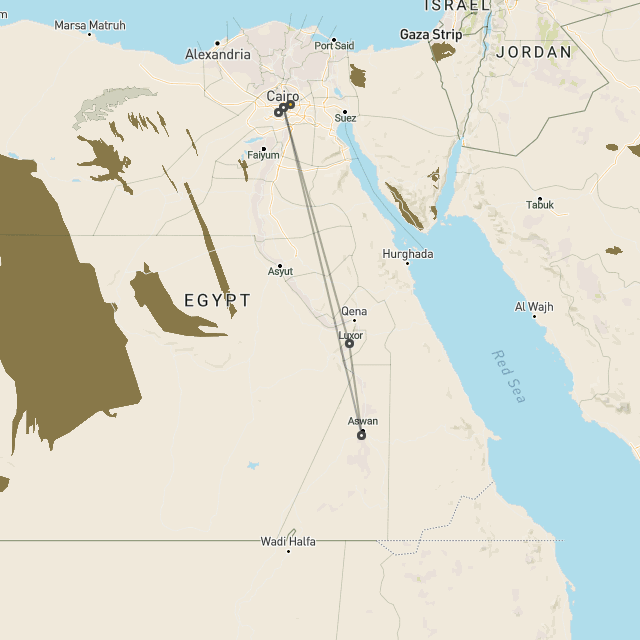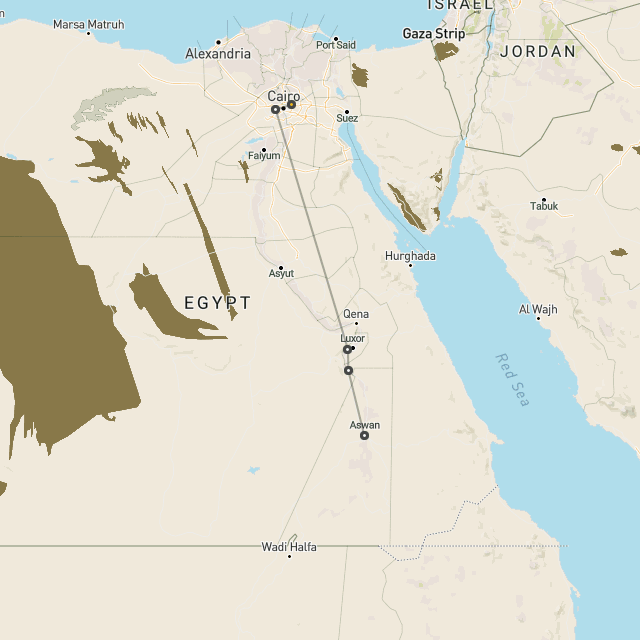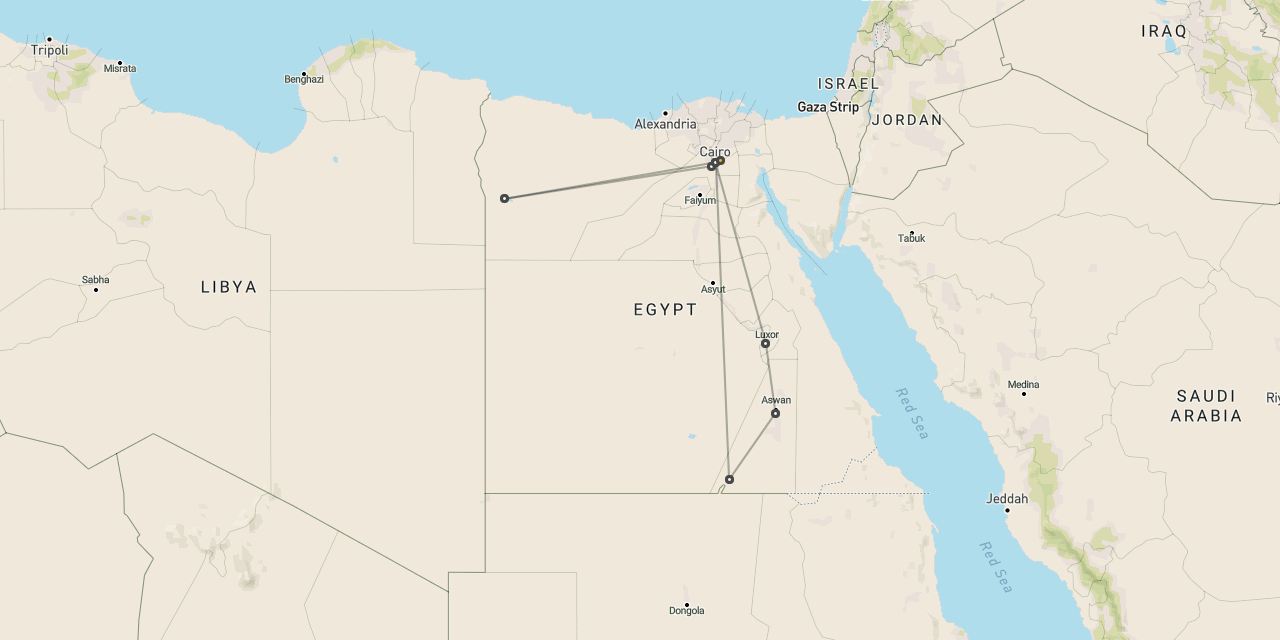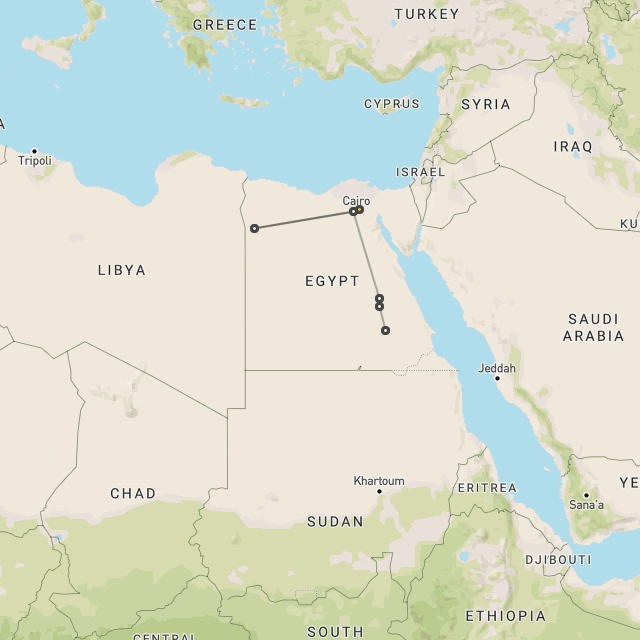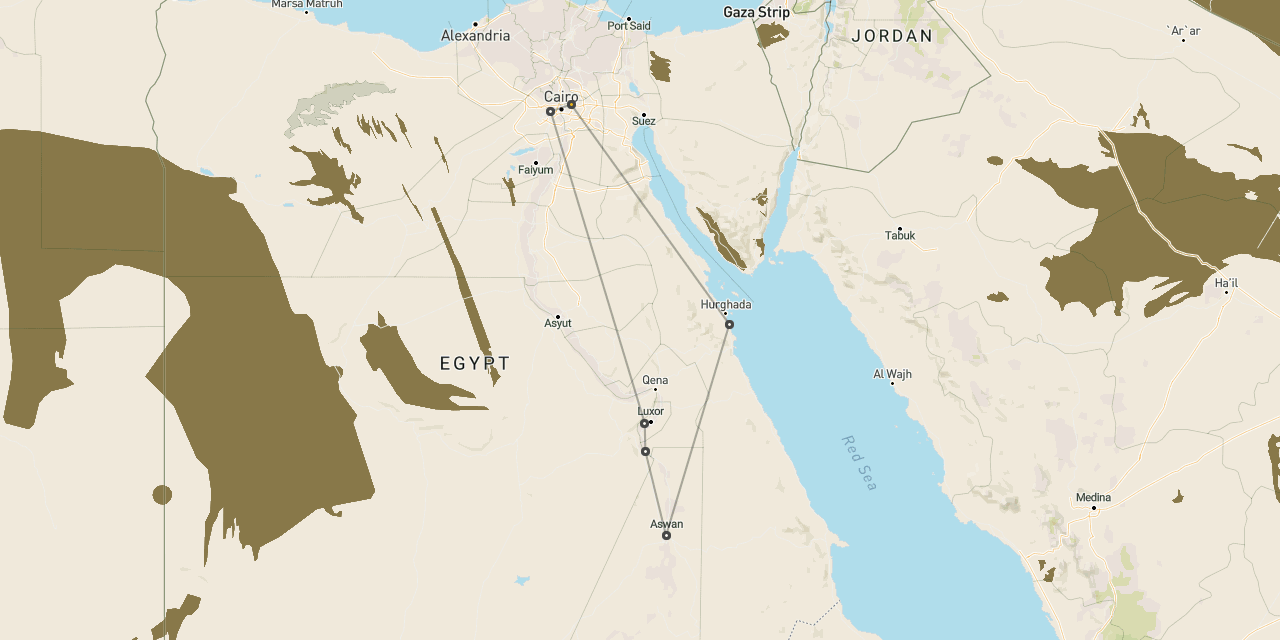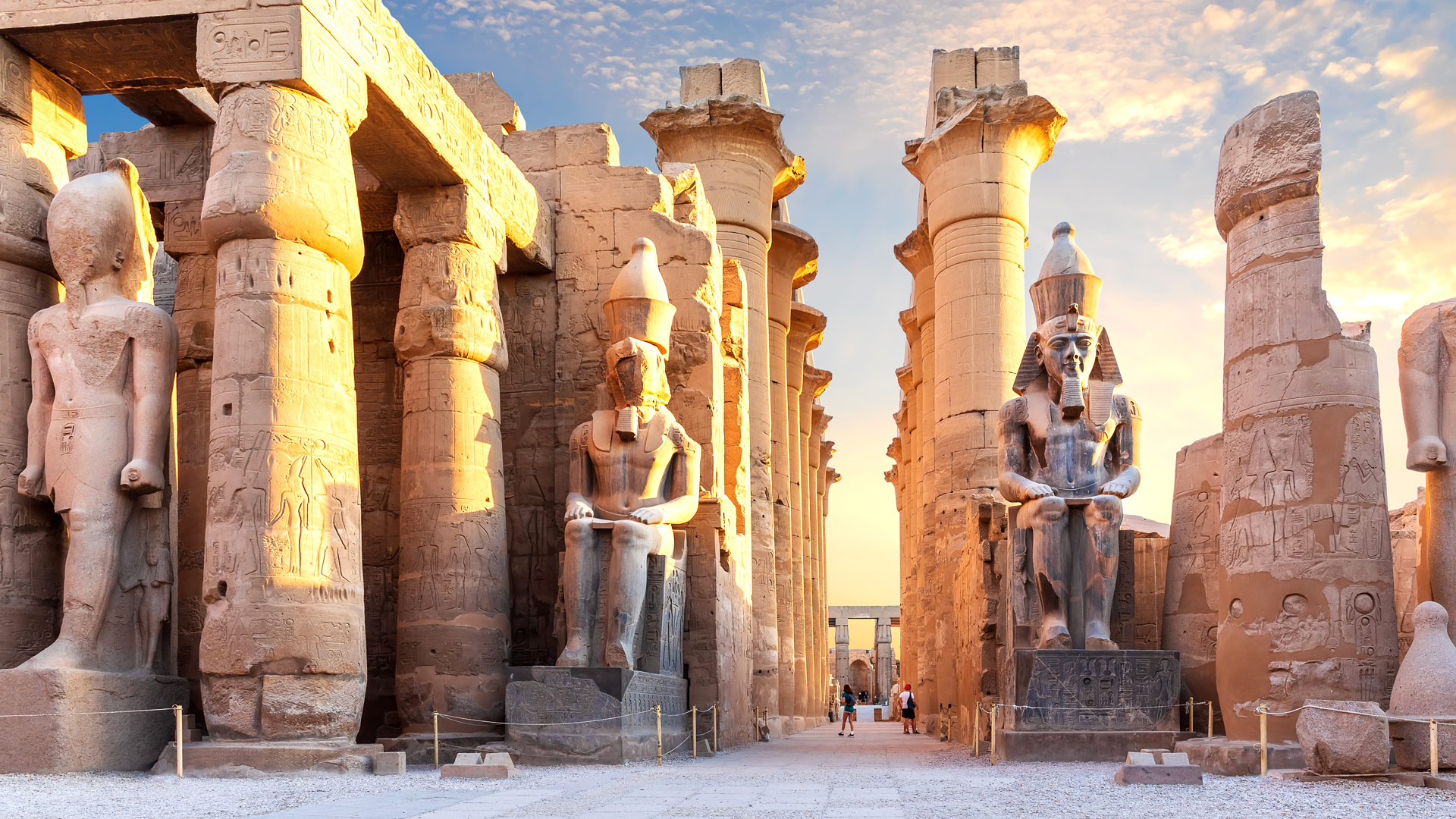
Travel to Luxor
Luxor
is the heart of ancient Egypt,
an entrancing place to visit
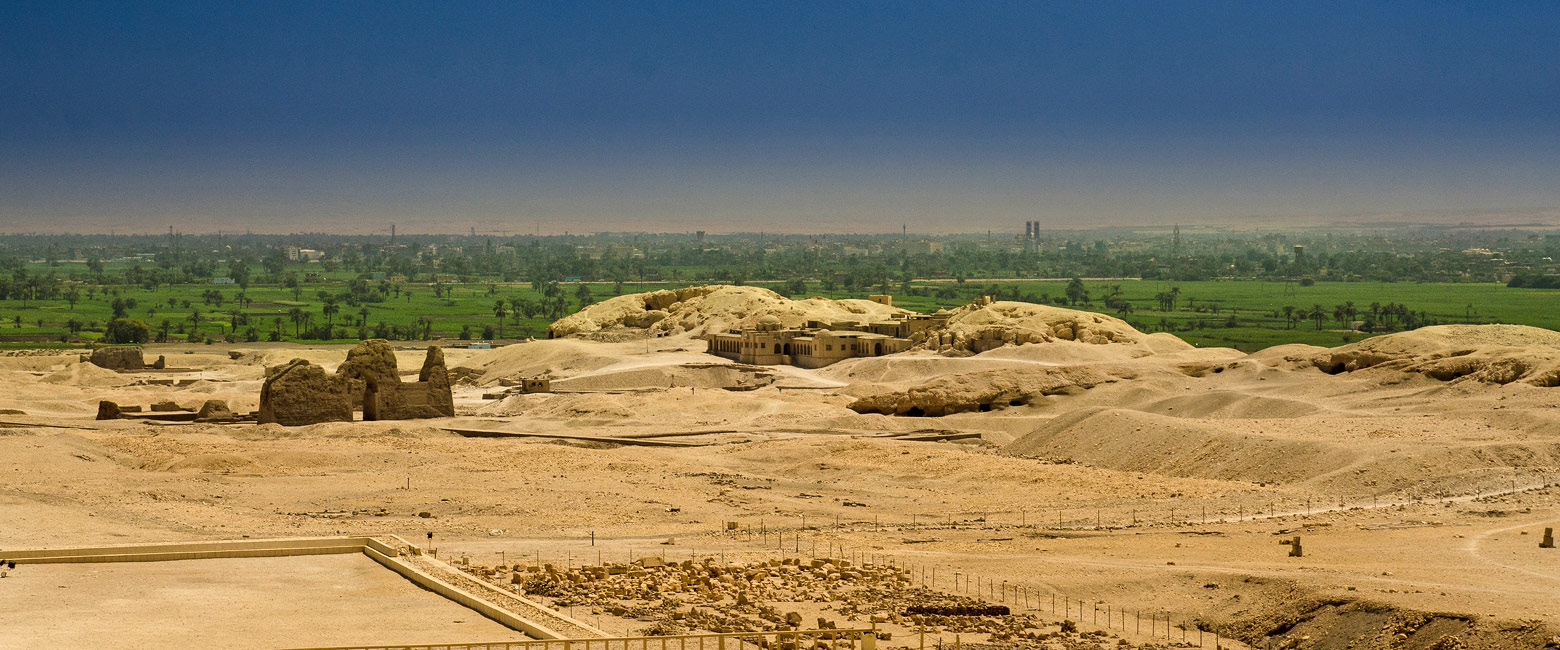
an incredibly impressive ancient landscape
Lying around 500km south of Cairo and 200km north of Aswan, Luxor (known in ancient times as Thebes) is the beating heart of ancient Egypt, home to some of the most spectacular archaeological sites from the New Kingdom Period.
Only after you have been here for some time, do you start to appreciate the great architectural plan that underpins the whole of this magical landscape.
The heart is the great temple at Karnak, with its great hall of megalithic columns, familiar from both Agatha Christie and James Bond.
In perfect alignment, but several miles west across the river, the remarkable Temple of Hatshepsut is dug into the side of a range of mountains, with a secret tunnel leading directly through to the great queen’s burial chamber in the Valley of the Kings.
The beautiful fields and palm groves of the west bank are strewn with colossal statues and impressive archaeological sites, whilst desert slopes above are a rabbit warren of ancient houses and tombs.
This semi-rural area is a delight to explore, walking, biking and riding amongst the laid-back villages and up into the hills.
When done properly, Luxor serves as the perfect antidote after the chaos of Cairo.
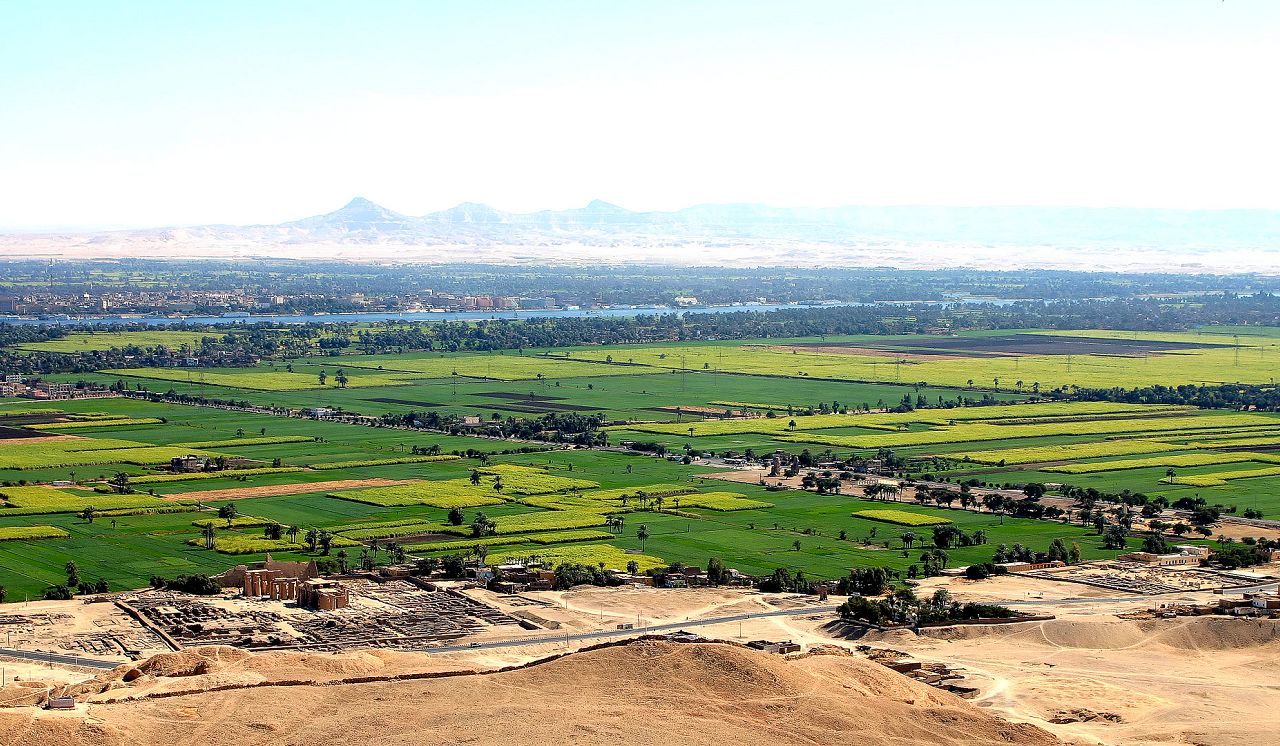
Gallery
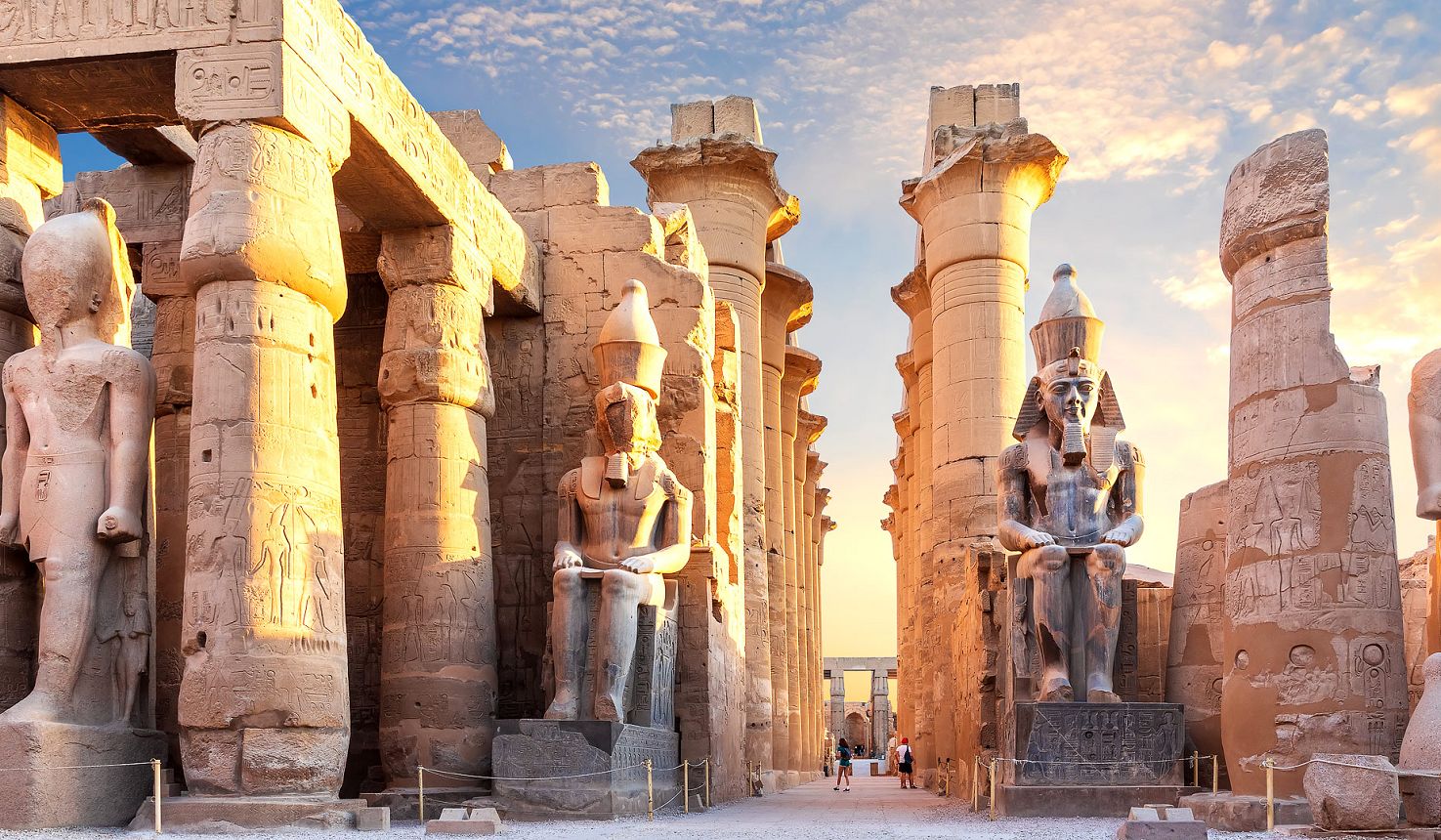
Video
Map
We usually recommend deploying at least three nights in Luxor, since the handful of hotels on the west bank are both unusually high quality and very relaxing.
The more time you spend here, the more likely you are to get under the surface of the place, avoid the crowds and get out to some of the lesser-known sites.
Seasonality
Luxor experiences a conventional northern hemisphere climate, with a pleasantly warm dry winter Nov-Mar and an uncomfortably hot dry summer centred on May-Sep.
During the Nov-Mar winter season the daytime temperatures typically reach a balmy 25C, with night-time temperatures plunging to a chilly 8C. These warm (rather than hot) conditions have led to winter being the most popular time to visit, meaning that visitor numbers reach their peak, especially around Dec-Jan. We therefore recommend November to mid-December and mid-January to March (excluding a week either side of Easter), although even then you probably need to deploy traffic avoidance measures when visiting the key sites.
The month of April represents a transition between winter and summer conditions and, in many ways, offers the best of both worlds, with visitor traffic also being relatively low (except for a week either side of Easter).
During the May-Sep summer season the daytime temperatures typically reach 41C, with nighttime temperatures holding up around 23C. These conditions are generally considered to be too hot and visitor numbers are much reduced.
The month of October represents a transition between summer and winter conditions and, in many ways, offers the best of both worlds, with visitor traffic also being relatively low.
Most trips spend 12-16 nights exploring the Nile Valley in a north to south direction. Luxor usually comes second, after the pyramids in Cairo and before a boat trip down to Aswan.
Getting there
Luxor is usually the second stop on an Egypt trip, after Cairo.
Guests returning to Egypt on subsequent trips may choose to avoid Cairo completely and fly directly into Luxor. Notably there are direct flights from London.
Most of our guests fly from Cairo to Luxor, but it is also possible for more intrepid travellers to take the overnight train.
The most popular way to leave is on a cruise boat, four to five nights south down the river to Aswan. This leg can easily be done in a few hours by train, or can be done by road if you want to visit the various sites along the way.
the relaxing antidote to the chaos of Cairo
let us know your thoughts about Egypt
and we will help you create the perfect trip
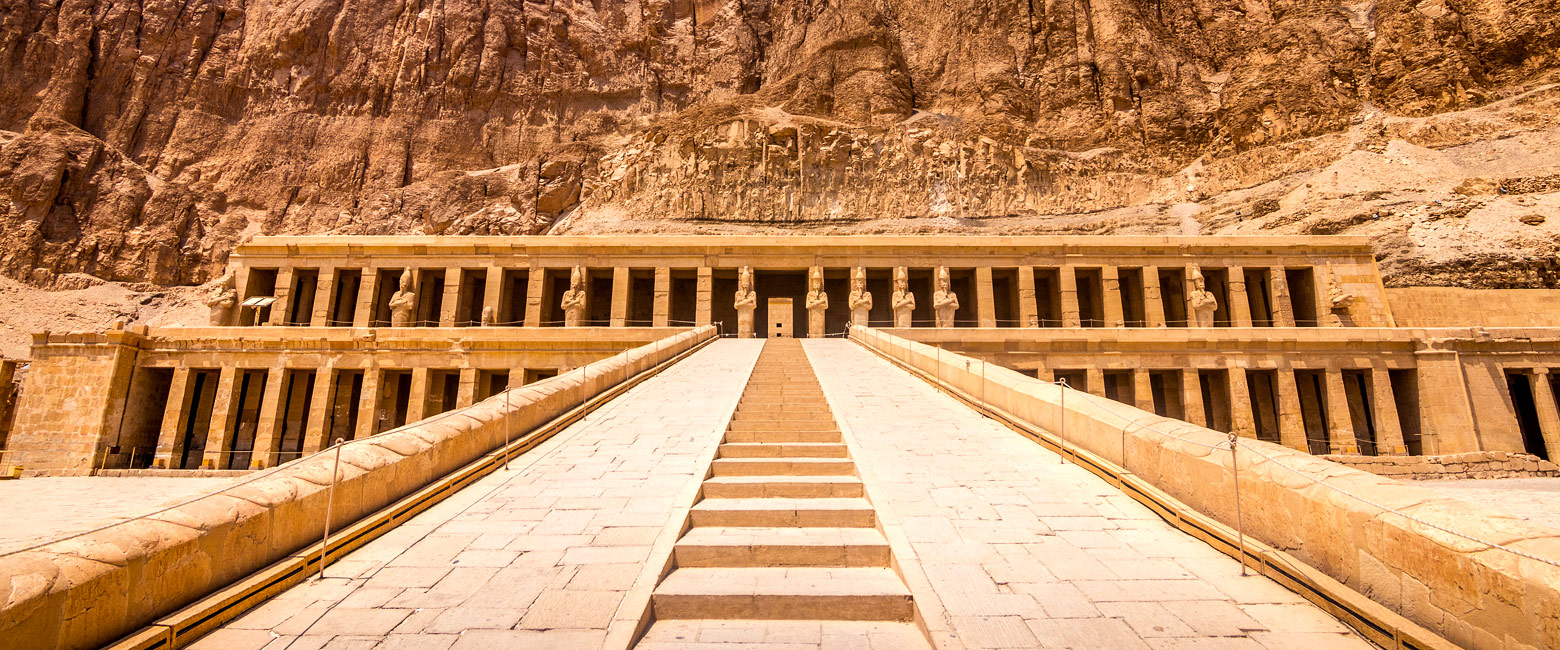
Extraordinary tailor-made adventures,
from earthy and edgy to easy and extravagant
From around USD 2500 per person, you set the ceiling
Sample Trips
Here are some of our popular trip shapes

Get started on your trip
It’s never too soon to get in touch, we are here to help with every stage of your planning.
Best Lodges
We regularly inspect and photograph all of the the best lodges, to ensure that we always recommend the most suitable options
Key Locations
Take a look around related locations. Click ‘View more’ to explore locations further afield.











































